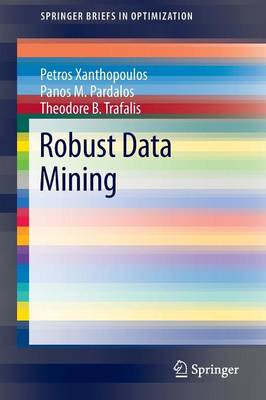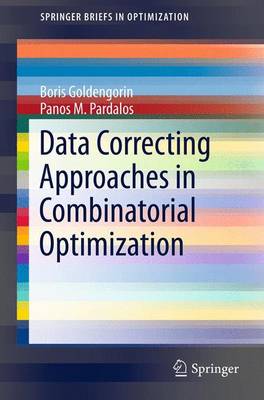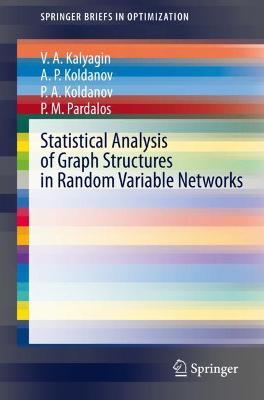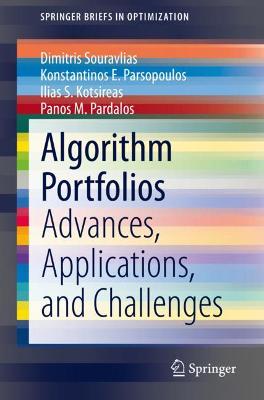SpringerBriefs in Optimization
1 primary work • 7 total works
Book 1
D-Optimal Matrices
by Ilias S. Kotsireas, Syed N. Mujahid, and Panos M. Pardalos
Robust Data Mining
by Petros Xanthopoulos, Panos M. Pardalos, and Theodore B. Trafalis
Data uncertainty is a concept closely related with most real life applications that involve data collection and interpretation. Examples can be found in data acquired with biomedical instruments or other experimental techniques. Integration of robust optimization in the existing data mining techniques aim to create new algorithms resilient to error and noise.
This work encapsulates all the latest applications of robust optimization in data mining. This brief contains an overview of the rapidly growing field of robust data mining research field and presents the most well known machine learning algorithms, their robust counterpart formulations and algorithms for attacking these problems.
This brief will appeal to theoreticians and data miners working in this field.
Data Correcting Approaches in Combinatorial Optimization
by Boris I. Goldengorin and Panos M. Pardalos
Optimization Approaches for Solving String Selection Problems
by Elisa Pappalardo, Panos M. Pardalos, and Giovanni Stracquadanio
Optimization Approaches for Solving String Selection Problems provides an overview of optimization methods for a wide class of genomics-related problems in relation to the string selection problems. This class of problems addresses the recognition of similar characteristics or differences within biological sequences. Specifically, this book considers a large class of problems, ranging from the closest string and substring problems, to the farthest string and substring problems, to the far from most string problem. Each problem includes a detailed description, highlighting both biological and mathematical features and presents state-of-the-art approaches.
This Brief provides a quick introduction of optimization methods for string selection problems for young scientists and a detailed description of the mathematical and computational methods developed for experts in the field of optimization who want to deepen their understanding of the string selection problems. Researchers, practitioners and graduate students in the field of Computer Science, Operation Research, Mathematics, Computational Biology and Biomedicine will find this book useful.
Statistical Analysis of Graph Structures in Random Variable Networks
by Valery A. Kalyagin, Alexander P. Koldanov, Petr A. Koldanov, and Panos M. Pardalos
This book studies complex systems with elements represented by random variables. Its main goal is to study and compare uncertainty of algorithms of network structure identification with applications to market network analysis. For this, a mathematical model of random variable network is introduced, uncertainty of identification procedure is defined through a risk function, random variables networks with different measures of similarity (dependence) are discussed, and general statistical properties of identification algorithms are studied. The volume also introduces a new class of identification algorithms based on a new measure of similarity and prove its robustness in a large class of distributions, and presents applications to social networks, power transmission grids, telecommunication networks, stock market networks, and brain networks through a theoretical analysis that identifies network structures. Both researchers and graduate students in computer science, mathematics, and optimization will find the applications and techniques presented useful.
Algorithm Portfolios
by Dimitris Souravlias, Konstantinos E. Parsopoulos, Ilias S. Kotsireas, and Panos M. Pardalos
This book covers algorithm portfolios, multi-method schemes that harness optimization algorithms into a joint framework to solve optimization problems. It is expected to be a primary reference point for researchers and doctoral students in relevant domains that seek a quick exposure to the field. The presentation focuses primarily on the applicability of the methods and the non-expert reader will find this book useful for starting designing and implementing algorithm portfolios. The book familiarizes the reader with algorithm portfolios through current advances, applications, and open problems. Fundamental issues in building effective and efficient algorithm portfolios such as selection of constituent algorithms, allocation of computational resources, interaction between algorithms and parallelism vs. sequential implementations are discussed. Several new applications are analyzed and insights on the underlying algorithmic designs are provided. Future directions, new challenges, and open problems in the design of algorithm portfolios and applications are explored to further motivate research in this field.






